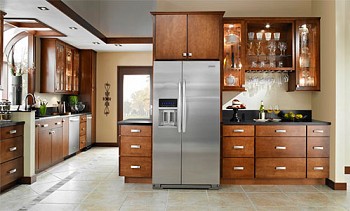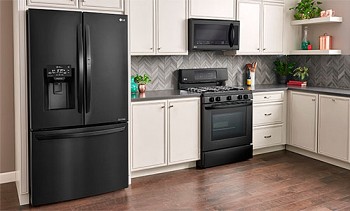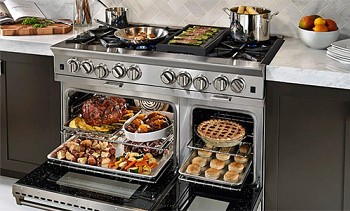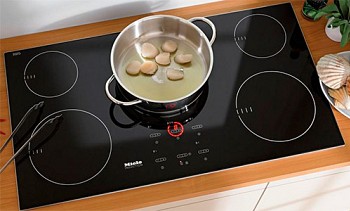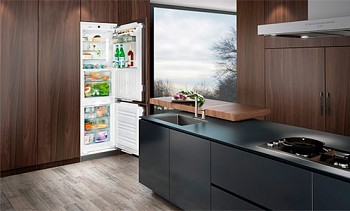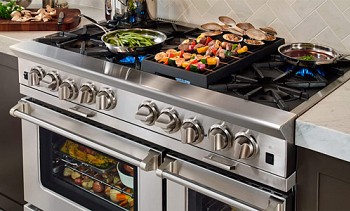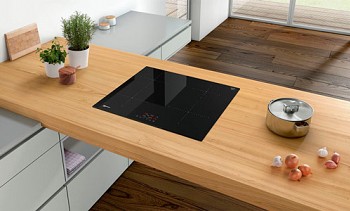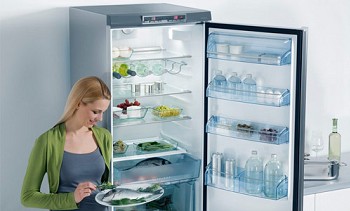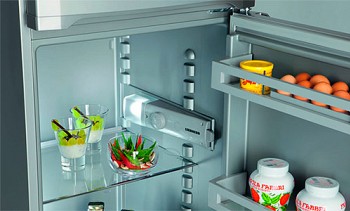All ovens, dependent and independent, built-in and separate, are divided into electric and gas. And it is precisely the difference in the energy source that is paramount; it is from this that one should begin one's choice.
A large proportion of ovens manufactured today are electric models, and there has been a recent trend towards its further growth. The offer, as you know, is determined primarily by demand: there are really fewer and fewer willing to purchase a gas oven. Does this mean that gas ovens are worse, or is the growing popularity of electric ovens just a fashion trend? Let's try to figure out which oven is better - gas or electric, which offers us a modern market, than to be guided by the choice.
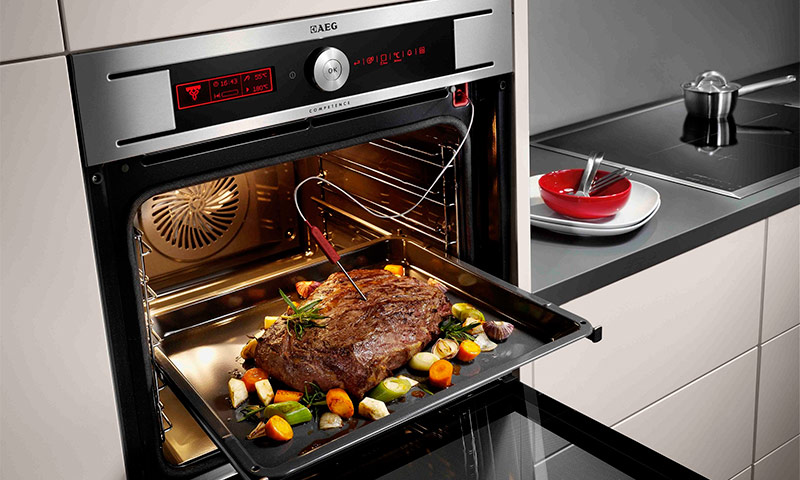
Content:
- What is each type of oven
- Technical requirements
- Modes of heating gas and electric ovens
- Variety of culinary features
- Ease of use
- Where baking quality is better - in gas or electric ovens
- Oven cleaning features
- The economic aspect of use
- Safety of use
- Device price
- Final Comparison of Gas and Electric Ovens
What is each type of oven
Mistresses regularly use the oven, but most of them do not even think about the principles of its operation. Modern ovens have overgrown with a ton of functions compared to models half a century ago, but in general their design has only become a little more complicated.
Any oven is, first of all, a metal cabinet with ventilation holes, inside which a working chamber is placed. The space between the chamber and the cabinet walls is filled with a heat insulator, which helps to reduce heat loss, and hence the energy consumption for heating.
The action of any ovens is based on non-contact heat transfer from the heating element to the processed product, as a result of which the latter is heated to a temperature of 30 to 250-280 ° C. The heat source may be heating elements (in the case of electric ovens) or an open flame (in the case of gas-fired ovens). All ovens differ in the number and type of arrangement of heaters - they can be placed only at the bottom or bottom and at the top of the working chamber, and sometimes even on the back wall, next to the convection fan.
Gas oven runs on combustible gas - main or balloon. By adjusting the flow of gas that enters the burner, you can change the flame size. Passing through the nozzle of the burner, the gas is mixed with air. The resulting mixture, after exiting through the side openings of the burner, ignites. Ignition of a flame in modern gas ovens is carried out by means of a built-in electric piezoelectric igniter. For the normal functioning of the gas oven requires a constant flow of air.
Technical requirements
The most important selection criterion is not your desires, but your capabilities. If the house is not connected to a centralized gas network, then all the talk about the advantages or disadvantages of gas ovens does not matter to you, since you are essentially deprived of a choice. (We will not consider the possibility of working from a cylinder with liquefied gas, since this option is acceptable only in the complete absence of other options.)

There are, however, technical restrictions on the installation of electric ovens. We are talking about a possible mismatch between the power consumption of the device and the power supply network.Three or four decades ago, the number of household electrical appliances was not the same as now, and their total power consumption is not comparable to today. Therefore, the electrical networks in houses built in the last century are designed for completely different loads. Installing a powerful electric appliance in a house of an old housing stock, such as a modern electric oven, may require replacing the wiring (however, replacing the wiring in a separate apartment does not always solve the problem due to insufficient power of the external networks).
When deciding what is best - a gas or electric oven, make sure that you have the technical capabilities to install both.
Modes of heating gas and electric ovens
To achieve a given degree of readiness of various products, different temperatures and heating rates are required. The more heating modes the oven has, the more varied the list of dishes that you can cook.
Inexpensive electric ovens are equipped with upper and lower heating elements (heating elements), which can be included individually or simultaneously. Sometimes, under the "ceiling" of the working chamber, there is another additional heat element, with maximum heating, the red-hot, red-hot grill.

In more expensive models, in addition to the classical heating modes, there is also convection. Convection - forced air circulation with the help of a built-in fan to redistribute the heated air over the entire area of the oven’s working chamber - helps to achieve uniform baking of food from all sides and forget about buns that were burnt from above and are moist inside.

The heating of the working chamber in low-cost gas ovens is unidirectional. The heat here is created only by a gas burner located below. True, despite this, a gas oven, as a rule, is superior to electric in heating rate.

In the models of the middle price segment, in addition to this, there is also a grill, which can be either gas or electric (ovens with an electric grill are in fact not gas, but gas-electric).

Gas oven with electric grill and convection heating.
Gas grill is more difficult to use, but it can significantly improve the taste of the dish. Many manufacturers have begun to equip their gas ovens with convection fans, which provide forced air circulation in the working chamber, which is necessary for quick and uniform heating of the cooked product. Around such a fan there is no heating element, as in electric ovens, it simply mixes the air warmed by the lower burner.
In electric ovens there are more heating modes than in gas ovens, although with the development of technology their capabilities are more and more compared.
Variety of culinary features
When comparing the functionality of modern electric and gas ovens, the former noticeably win. In addition to several basic heating modes, it is often possible to find additional thermal modes (“Gentle defrosting”, “Quick warm-up”, “Maintaining the finished dish in a warm state”, “Stewing”, “Fermentation”, etc.), as well as the possibility of cooking on pair or combination with a microwave.
The smart timer can be programmed to turn on or off at the right time. The thermal probe does not just measure the temperature inside the baked product, but gives a signal of its readiness. The automatic cooking programs of various dishes built into the memory can even make a real chef out of an inexperienced hostess. It is not surprising that many cooks, even in gasified kitchens, prefer to have an electric oven, which provides more opportunities for creativity.
The functionality of gas ovens is still much poorer than the capabilities of their electric "counterparts".
Ease of use
The mechanical control of the gas oven does not cause any difficulties even for those users who are exclusively with “you” with any equipment; disable it is almost impossible.

Gas oven controls.
Electric oven control can be implemented in two ways - electromechanical or electronic. The electromechanical control unit is simpler and more reliable, while the electronic one provides the user with much more options, making the oven not just a kitchen appliance, but a smart home appliance. It is impossible to say which of these three options is better or worse - it all depends on your personal preferences.
 Electromechanical control.
Electromechanical control.

Electronic control.
The main drawback of the Soviet-era gas ovens was the difficulty of ignition. Having spent a box of matches and at the same time having failed to ignite the flame, the owner of this miracle sighed heavily, enviously recalling the electric oven that he saw with his neighbor. Today we are spared such problems. Almost all modern gas ovens are equipped with electric ignition with manual or automatic activation. When you turn the gas regulator, an electric spark jumps inside the burner, which ignites the gas. This happens either as a result of your pressing the ignition button, or in automatic mode. Electric ignition allows you to completely forget about matches, which greatly simplifies the use of the oven.
The answer to the question of which is better - a gas or electric oven - from the point of view of ease of use, depends on what you invest in the concept of convenience - affordable simplicity or the maximum implementation of modern technologies.
Where baking quality is better - in gas or electric ovens
It is traditionally believed that an open flame is more noble than electric heaters, that dishes cooked on fire have a special taste and aroma. Recently, however, the preferences of the hostesses have been clearly on the side of electric ovens. In them, the heating elements distributed over the entire area of the device provide uniform heating of the product from all sides.

In gas, it is much more difficult to achieve uniform baking. Professionals manage to get good results in gas ovens, but, apparently, this is the result of their many years of experience and dexterity - each gas oven has its own character, usually extremely harmful.
No one will give an objective answer to the question in which oven the dishes are tastier, because taste is an exclusively individual concept. But to achieve uniform baking of products and reproducible results in electric ovens is much simpler.
Oven cleaning features
Popular wisdom says: "Do you like to eat, love and wash the oven." The proverb may not be quoted quite correctly, but the essence of this does not change: the walls of the oven must be periodically cleaned of accumulated dirt. It is better to do this after each use, because, firstly, rare cleaning of the cooking place is simply unhygienic, and secondly, fresh dirt is much easier to remove.
Owners of cheap ovens, both electric and gas, will have to manually clean the walls. Increasingly, there are models with the EcoClear cleaning system: fat does not stick to a special “bioceramic” wall coating in such ovens, which means that the cleaning procedure becomes less time-consuming.
In more expensive units, manufacturers have provided automatic cleaning. Two methods of self-cleaning the walls of the oven are used - catalytic and pyrolytic. The technology of catalytic decomposition of fat and other contaminants directly during cooking on a catalyst deposited on the enamel that covers the walls can be implemented in both electric and gas ovens.

Oven with catalytic panels.
But pyrolysis, i.e.burning out product residues at 500 ° C is possible only in electric models, since using a gas burner it is almost impossible to heat the walls to the required temperature. The pyrolytic cleaning method is considered the most effective, but the ovens in which it is used are the most expensive.

Oven with pyrolysis cleaning.
Owners of most gas ovens will have to clean the cooking chamber manually, using a sponge and detergent. Electric ovens have more options to make life easier for their owners.
The economic aspect of use
The main disadvantage of electric ovens is the high operating costs. Indeed, in this parameter they lose to gas "brothers": electricity costs consumers more than main gas. However, many residents of gasified houses and apartments prefer to install electric ovens in their kitchens. What is the reason for such negligence? Let's try to evaluate how expensive it is to use an electric oven.
An oven is still not a hob and is not used every day. Most housewives bake something or fry in it at best once or twice a week, or even less. The power of the oven is 2-3 kW, the average cooking time in it is less than 2 hours. Multiplying all these figures, we understand that with today's electricity tariffs, your costs are unlikely to exceed a hundred rubles a month. If gas is paid by the meter, the amount of savings will be completely ghostly. Is it worth the sacrifice of convenience for the sake of this economy? It is up to you to decide.
Using a gas oven is cheaper than an electric oven. You can estimate the amount of savings yourself, based on the estimated frequency of use of the device, as well as the cost of electricity and gas in your area.
Safety of use
No freshly baked pies or grilled chicken will be a joy if you are constantly haunted by the thought of the potential danger of the unit with which you prepared them. Which oven is better - electric or gas - in terms of safety?
The word "gas" for many is strongly associated with the word "danger". Indeed, a gas leak can lead to fatal consequences such as poisoning of people in the room or explosion. To minimize the risk, all modern imported gas-fired ovens are equipped with the “gas-control” function: in case of accidental extinction of the flame (which could be caused by a strong air flow or spilled liquid), the gas supply will be automatically shut off.
In some models, when the fire is extinguished, the gas supply does not stop, but auto-ignition is triggered. The result of both variations is the same - the probability of gas leakage into the room is nullified. Safety depends not only on the design of the oven, but also on the correctness of its connection to the gas main: this work should be done exclusively by a specialist. We also recall that during the operation of a gas oven, combustion products, including carbon monoxide, are released. So that it does not accumulate in the room in concentrations hazardous to human health, care should be taken to ensure good air circulation and at the same time purchase an extractor hood with the oven.
On the other hand, electric ovens are also fraught with a certain danger - this is the probability of fire due to overheating, and the risk of electric shock to the user. To prevent the risk of fire of furniture and other items located in the immediate vicinity of the oven, temperature sensors are installed on its outer walls. When the walls are heated above a predetermined limit (usually 90 ° C), they turn off the power to the device. In addition to this, tangential cooling is applied - blowing the outer walls of the oven with cold air.

Protective shutdown will help protect a person from electric shock: in the event of a malfunction, the electronics will de-energize the device. It should be remembered that the safety of using electric ovens depends not only on the manufacturer of the equipment, but also on the correctness of its connection to the power grid. If you do not know what power consumption, wire cross-section, grounding, etc. are, then do not do it yourself, but seek help from a professional electrician.
Explosion and fire hazard of gas ovens is higher than electric. However, it should be understood that safety depends primarily on compliance with the rules of installation and operation, that is, on you.
Device price
Prices for any household appliances depend on technical characteristics, functionality, energy efficiency, ease of use, attractive appearance, as well as the novelty and popularity of a particular model and, of course, the prestige of the brand.
It would seem that gas ovens should be significantly cheaper than electric ones, because they benefit only in the amount of secondary operating costs, in this case the cost of an energy source. However, in practice, we observe the opposite: the average gas oven costs about one and a half times more expensive than a similar functional electric. Apparently, in this case, the factor of lesser representation on the market affects: gas is produced by an order of magnitude less than electric.
With the same or even superior capabilities, electric ovens are cheaper than gas ovens.
Final Comparison of Gas and Electric Ovens
 |  | |||||||
|---|---|---|---|---|---|---|---|---|
| Electric ovens | Gas ovens | |||||||
 |
 |
|||||||
| Technical requirements | It is enough to have an electric network, but it must be designed for a certain load. | Main gas is required. | ||||||
| Heating modes | A large number of modes. | They have a small number of heating modes. | ||||||
| Variety of culinary features | A huge number of culinary functions. | The number of culinary functions is small. | ||||||
| Ease of use | A bit more comfortable. | Less comfortable. | ||||||
| Where is better baking quality | It is easier to achieve uniform baking. | Quality baking requires dexterity and getting used to a certain model. | ||||||
| Oven cleaning features | They have great opportunities for automatic cleaning. | As a rule, only the traditional cleaning method is available. | ||||||
| The economic aspect of use | Use is more expensive. | Use is cheaper. | ||||||
| Safety of use | Safety at a higher level, subject to all rules and regulations. | Explosion and fire hazard is higher. | ||||||
| Device price | Cheaper. | More expensive. | ||||||



